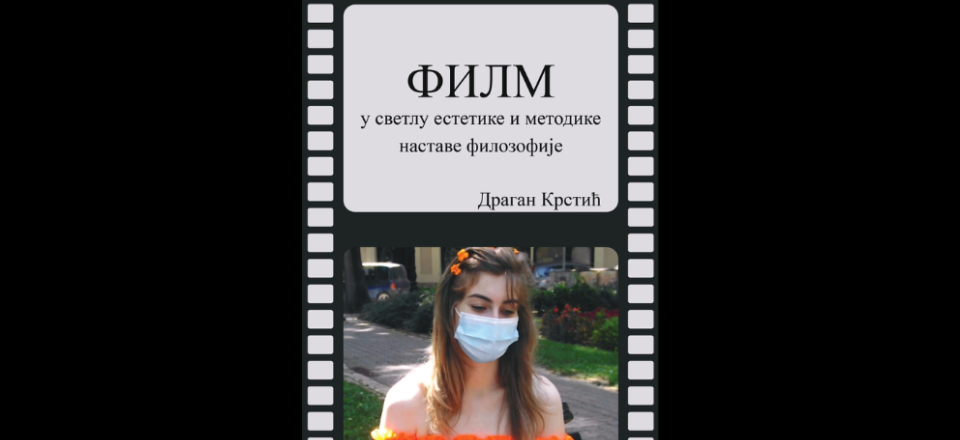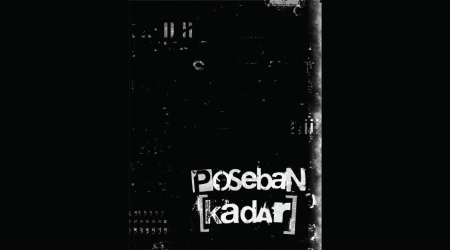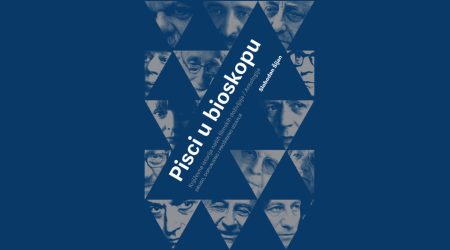Book Promotion
Back to...The book Film in the Light of Aesthetics and Methodology of Teaching Philosophy

The book Film in the Light of Aesthetics and Methodology of Teaching Philosophy was created in a time of everyday exposure of young people to the screens of smartphones, televisions and computers and uncritical acceptance of screen content.
Critical thinking among young people is declining day by day. If so, then we should return to the beginning of mass communication media, i.e. to the film and pose the question - how to use cinema to raise up the stumbling critical thinking? In order to answer this question, we must first answer the question - what is cinema?
I provide an answer to this question, which has rightfully been pondered since the days of Ricciotto Canudo, in the first part of this book, and the answer came into existence in a dialogue with relevant aesthetic and other theoretical literature, as well as in a direct dialogue in Palić with our famous film aesthetes and theorists (Prof. Dr. Ivana Kronja, Dr. Mihailo Vidaković and Prof. Dr. Nikola Božilović), film critics (Nenad Dukić, Dinko Tucaković, Nebojša Popović, Bojan Bosiljčić, Milan Vlajčić, etc.), actresses (Milena Dravić, Vera Čukić, Sonja Savić, etc.) and directors (Srdan Golubović, Dejan Zečević, etc.)
Accepting the position that film can "philosophize", i.e. convey philosophical ideas, and the position that modern teaching cannot be imagined without the use of teaching aids, in the second part of this book (Film in the Light of Methodology of Teaching Philosophy) I tried to show (using actual examples) two ways in which cinema can be used in the teaching of philosophy.
The first way is for the students to watch, on their own computer, a film by some distinguished director in which a philosophical problem that needs to be taught according to the plan and program can be seen, and when the student points out the scenes in which the problem is illustrated, the professor shows said scenes and starts a discussion.
The other way is for students, with a little help from their professor-mentor, to shoot amateur philosophical films about some of the problems young people face, which the main and supporting characters solve by referring to the opinions of great philosophers. In the second part of this book, I talk in detail about the amateur pedagogical-philosophical films, i.e. about the philosophically educational films made by my students.
If we look at these films, as well as other amateur films, axiologically, we can easily classify them as pseudo-art, because in terms of craftsmanship and aesthetics, in most cases, they are not at the level of true art films. However, if we look at amateur films from the perspective of the ontology of the creative act, then they are not kitsch, because they are not driven by utilitarian motives, but by the deep need of their authors to relate to life in a real human way. Thanks to those films their authors, at least for a little while, become free, innovative and creative individuals.
Given that it is the aim of the pedagogical-philosophical film to establish itself as a new film genre, two scripts (Categorical Imperative and Mystery at the Lake) are presented at the end of this book which will be used by my former students, now actors, cameramen, editors and directors, to make their two debut films. If they manage to incorporate aesthetic value into these two films (Categorical Imperative and Mystery at the Lake) as successfully as many creators belonging to other genres have done, then the pedagogical-philosophical film will become a new film genre.
Since I believe that film is indeed real art, but, of course, in addition to its aesthetic function it can have many other functions (pedagogical, religious, political, ideological, entertainment, etc.), and that the future of art film depends on the festival, I tried with my views to I direct the young reader (for whom this book is intended) to art film. The preparation and printing of this book was made possible by the City of Subotica.
Dragan Krstić
Back to...














